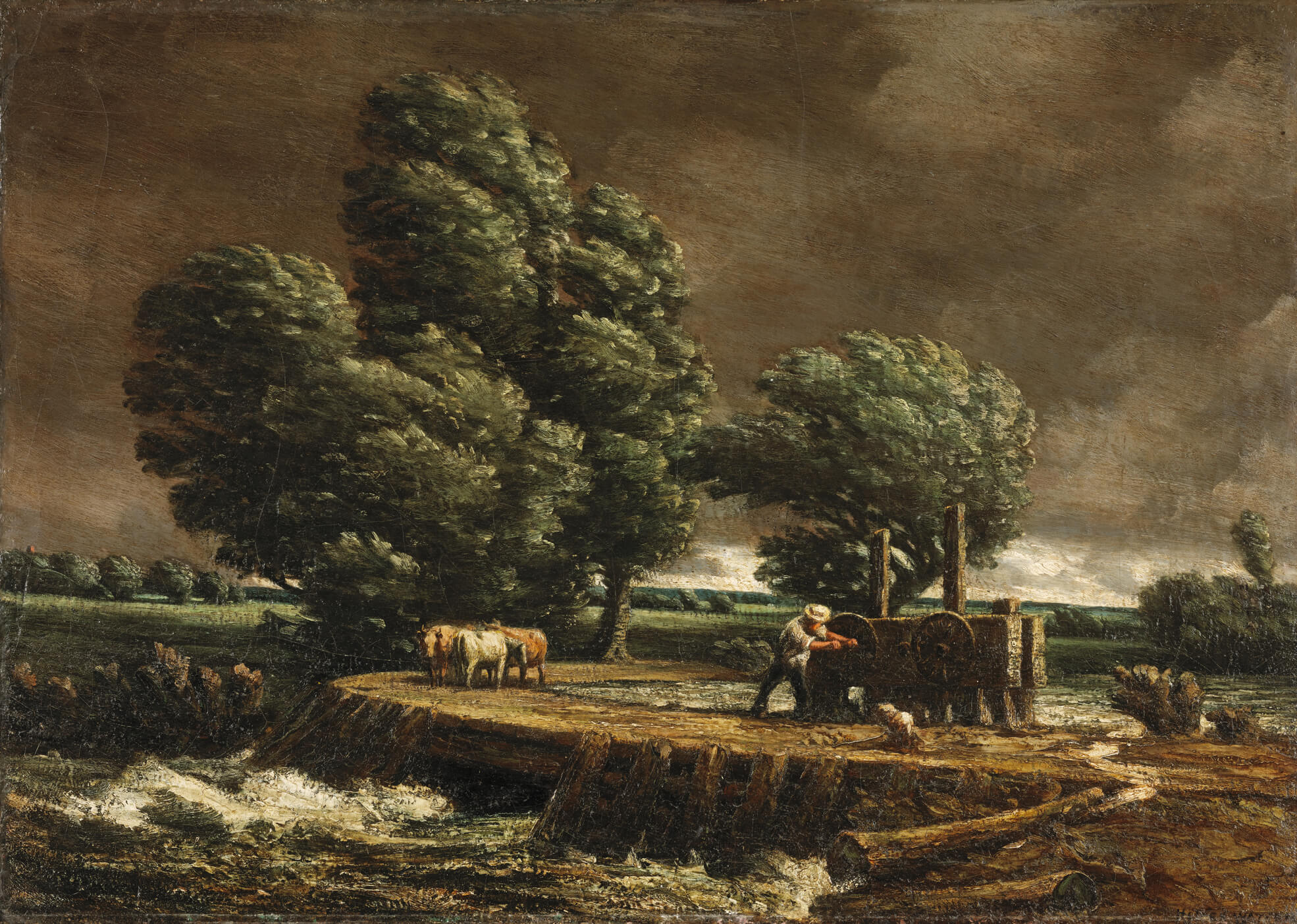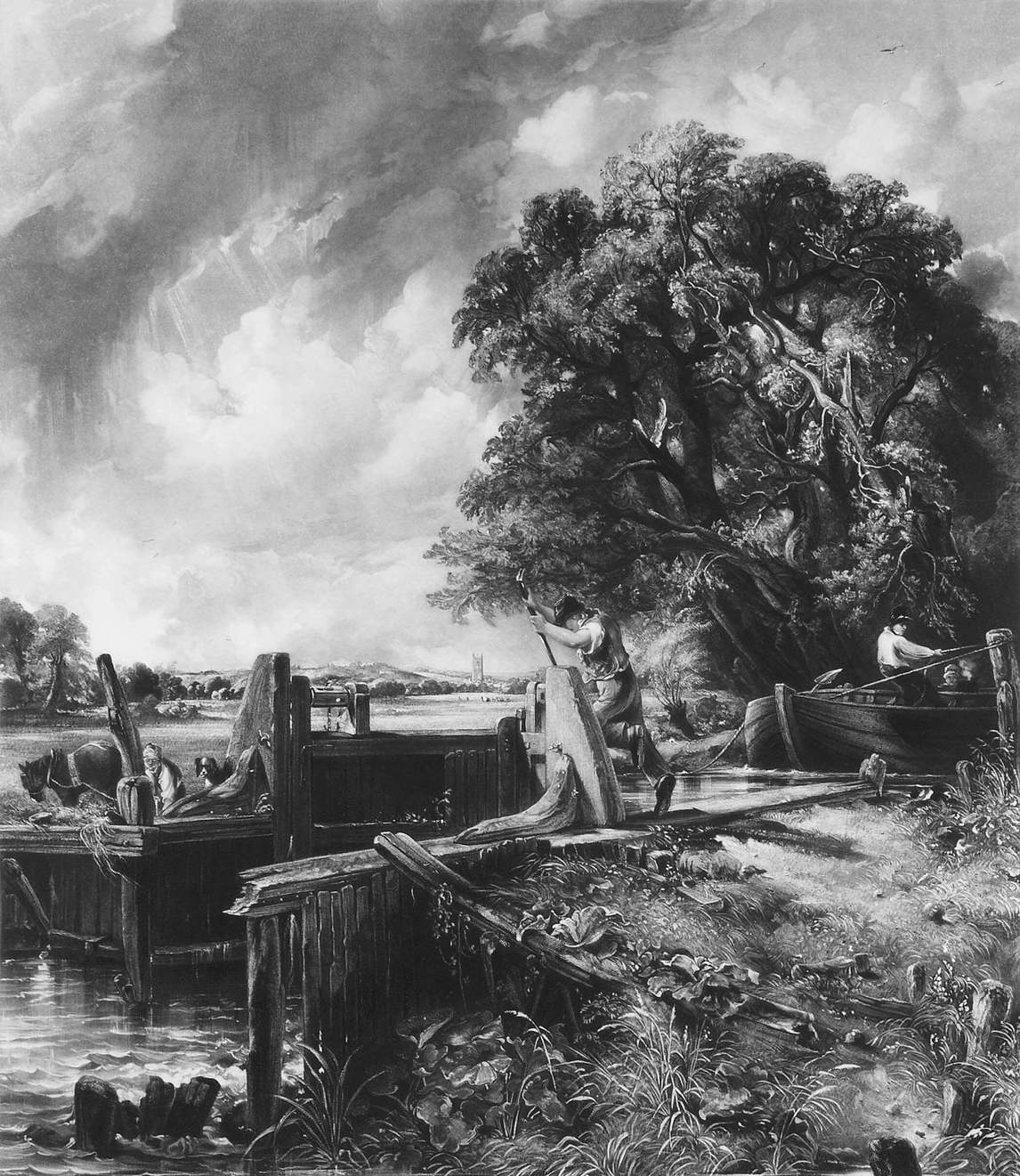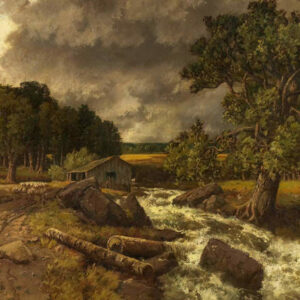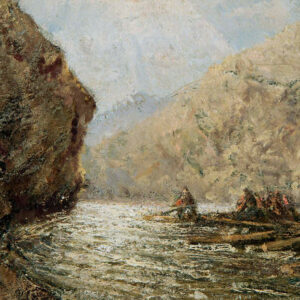The Flood Gate c.1900–1

Homer Watson, The Flood Gate, c.1900–1
Oil on canvas, mounted on plywood, 86.9 x 121.8 cm
National Gallery of Canada, Ottawa
The Flood Gate is a completely unified painting. Its pervasive dark colours, its rich brushwork (significantly thicker than in Log-cutting in the Woods, 1894), and its forceful sense of internal movement bind together the human figure, the trees, the sky, and the choppy water, underscoring Watson’s favourite theme of nature’s power and majesty. That theme is touchingly accentuated by the smallness of the man and the cows within the turmoil of the rest of the image.
The scene—Watson’s last major treatment of a mill theme—is of a man taking pressure off a dam by opening its floodgate during a storm. This action would preserve both the dam and the millpond that it had been built to create. A niece of the artist claimed that the origins of the painting could be traced back to Watson’s childhood, when he had witnessed the catastrophic consequences of a burst dam.

Critics at the time and later saw The Flood Gate as a high point in the evolution of Watson’s style; the artist himself described it in 1908 as his best painting thus far. By that date he had exhibited it at the Royal Glasgow Institute of the Fine Arts, at the Canadian National Exhibition in Toronto (1903), at the Louisiana Purchase Exhibition in St. Louis (1904; the painting won a bronze medal), and in the annual exhibition of the Royal Canadian Academy of Arts (1908). A.Y. Jackson (1882–1974) reportedly told Watson that the canvas belonged in the Louvre, and Jackson’s fellow Group of Seven member Arthur Lismer (1885–1969) characterized it in the 1930s as “an old master” painting: Canada’s finest depiction of a rural landscape.
Watson conceived The Flood Gate in relation to the markedly different painting The Lock, 1824, by John Constable (1776–1837), although he is more likely to have seen the 1834 mezzotint of that painting, by David Lucas (1802–1881), rather than the canvas itself. The differences between The Flood Gate and The Lock were intentional, a reflection of Watson’s wariness of being characterized as a mere follower or, worse, imitator of the more famous artist:
I said, “Hang it, I will paint a subject Constable would have delighted to paint,” and that is my grandfather’s ‘Mill Pond.’ … Just some fun for me in a way for calling me a follower of Constable. I thought let ’em have it, for I felt in my head I need follow no man.
In any case a reviewer of the 1908 RCA exhibition saw enough of a resemblance between Constable’s art and The Flood Gate to describe the Watson painting as being “after the Constable school of treatment.”
Despite its strong reputation, The Flood Gate had a checkered history. Eric Brown (1877–1939) of the National Gallery of Canada in Ottawa reported that, during a 1919 American tour, the weight of the thick paint had torn the canvas away from its stretcher, resulting in significant cracking of the paint. Several years earlier the work had been acquired from Watson by the Montreal collector and banker J. Reid Wilson, who then discovered that the lighting in his house was not strong enough to show the dark painting to advantage. Wilson loaned it to Montreal’s Mount Royal Club, but the lighting there was no better, and so he exchanged The Flood Gate for another Watson with brighter colouring. It was still on the market in 1908 when the National Gallery declined to buy it, much to the indignation of the critic Newton MacTavish: “I . . . cannot think what was the matter with the commissioners when they failed to properly appreciate it.” The Flood Gate was eventually acquired by the National Gallery in 1925.

 About the Author
About the Author
 More Online Art Books
More Online Art Books
 Acknowledgements
Acknowledgements